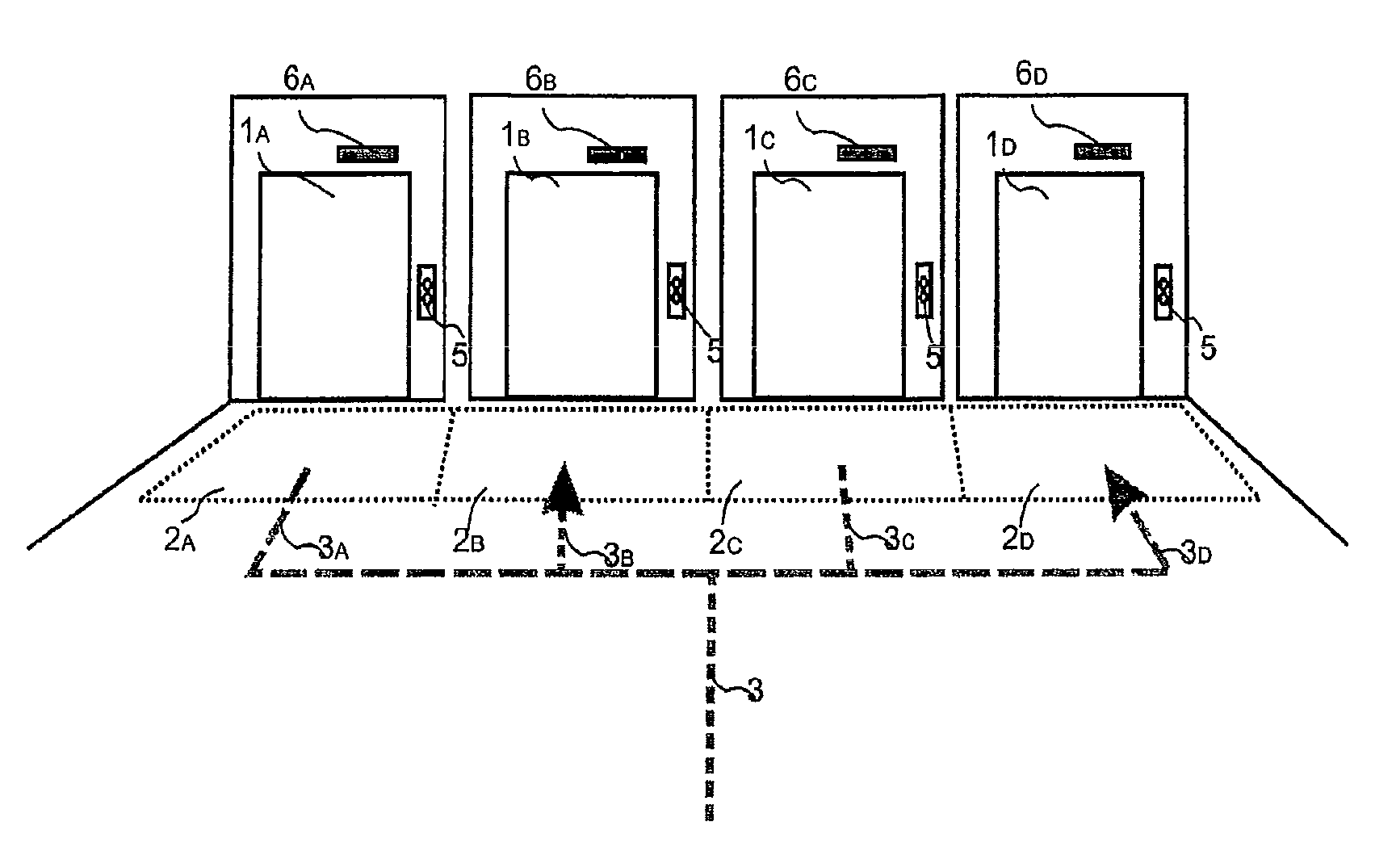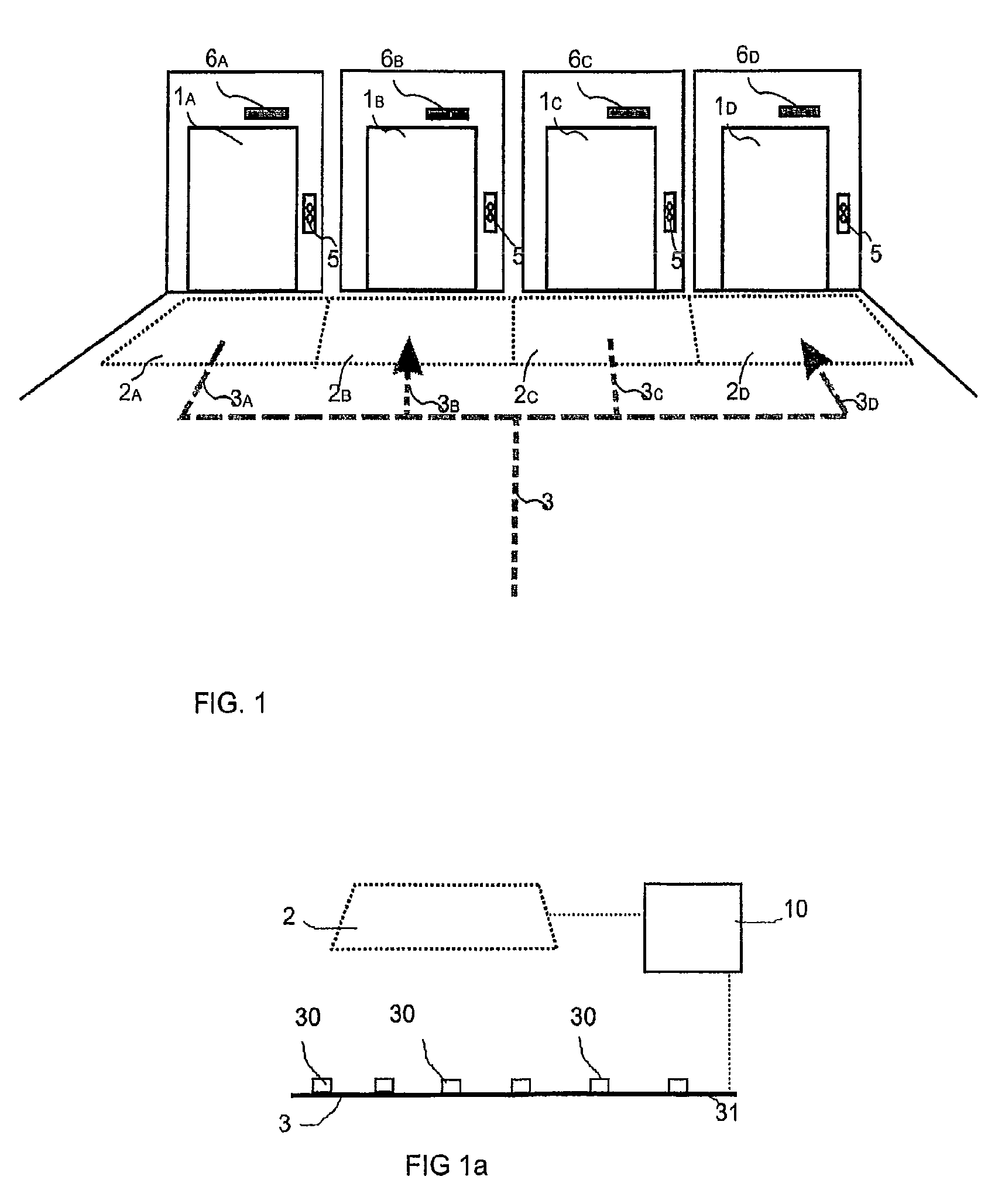System for controlling elevators based on passenger presence
a technology of elevators and passenger presence, applied in the direction of elevators, signalling systems, sustainable buildings, etc., can solve the problems of uneven distribution of elevator groups, inability to maximize utilization of elevator capacity, and difficulty in predicting the utilization rate of elevators
- Summary
- Abstract
- Description
- Claims
- Application Information
AI Technical Summary
Benefits of technology
Problems solved by technology
Method used
Image
Examples
Embodiment Construction
[0016]FIG. 1 presents one embodiment of the solution according to the invention in connection with an elevator group, in which the entrances of the elevators 1A, 1B, 1C, 1D of the elevator group are side by side on the floor. Sensors 2A, 2B, 2C, 2D are arranged in front of the elevators, which sensors are arranged e.g. on the floor or on the ceiling. The sensors are typically of the type that they can give information about the number of people that are in front of the elevators. One preferred sensor type is a capacitive sensor, which can be arranged under the floor surface. According to one embodiment, it can also be used under e.g. the ceramic tiles of a tiled floor.
[0017]FIG. 1 also presents an arrangement for guiding passengers, which comprises at least a light-source band 3. The light-source band 3 comprises in the figure the light-source band sections 3A, 3B, 3C, 3D, which lead to the proximity of the different elevators 1A, 1B, 1C, 1D. The light-source band is of the type tha...
PUM
 Login to View More
Login to View More Abstract
Description
Claims
Application Information
 Login to View More
Login to View More - R&D
- Intellectual Property
- Life Sciences
- Materials
- Tech Scout
- Unparalleled Data Quality
- Higher Quality Content
- 60% Fewer Hallucinations
Browse by: Latest US Patents, China's latest patents, Technical Efficacy Thesaurus, Application Domain, Technology Topic, Popular Technical Reports.
© 2025 PatSnap. All rights reserved.Legal|Privacy policy|Modern Slavery Act Transparency Statement|Sitemap|About US| Contact US: help@patsnap.com



